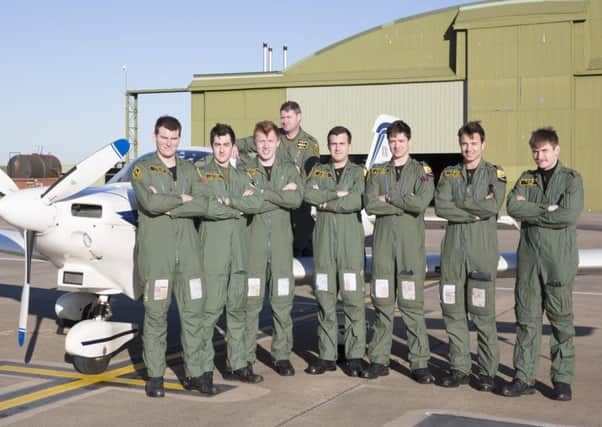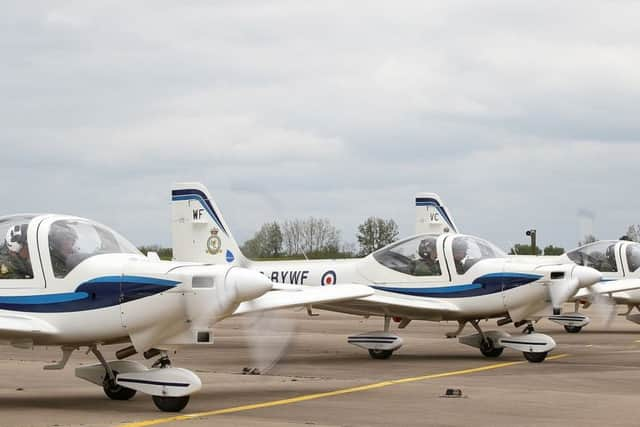Junior pilots graduate as RAF Wittering celebrates 100 years.


The centennial year at RAF Wittering got off to a flying start as student pilots from 16 (R) Squadron successfully graduated from their elementary flying training.
Nine junior officers have undergone 26 gruelling weeks of training, which included the theory of flight, aircraft operations and flight planning, meteorology, the principles of navigation and general flying.
Advertisement
Hide AdAdvertisement
Hide AdOnce behind the controls of an aircraft, the students have had to master the skills required of every Royal Air Force pilot. During an intense, minimum of 56 hours of flying, the young fliers learned straight and level, turning, stalling, aerobatics and what to do in an emergency before graduating on Thursday (January 14


The history of RAF Wittering began in 1916 when Stamford airfield was established on Wittering Heath as a Royal Flying Corps base for No 38 Home Defence Squadron’s anti-Zeppelin BE2C and BE12 fighters.
Flying training still demands much of the trainees; students are constantly given new skills and manoeuvres to practice. Upon successful completion of ground school and airborne training the pilots are streamed into the next phase; fast jet, helicopters and multi-engine aircraft.
The tough course requires focus and an intense level of dedication if students are to succeed. One student said; “It’s the only course I’ve ever been on where you can score 94 per cent in an exam and still finish last.”
Advertisement
Hide AdAdvertisement
Hide AdSquadron Leader Carlos Melen is the Officer Commanding 16(R) Squadron and this is the second course of novice pilots to have graduated under his leadership.


He said; “Graduating is not easy. Some natural aptitude is required, and focus and commitment are absolute requirements. The key ingredient here is the Royal Air Force’s world class training system and a syllabus that can draw out the students’ innate talents and potential.”
Group Captain Rich Pratley, the Commanding Officer at Royal Air force Wittering, said: “2016 is an important year, two years will have passed since we reactivated the airfield and it’s been a nearly a year since our resident flying squadrons arrived. Most importantly this year RAF Wittering marks its centenary, and I can’t think of a better way to begin.
“What we do here is massive. At RAF Wittering we train the next generations of Royal Air Force pilots, and provide the deployed engineering and logistics that the RAF needs to support operations.”